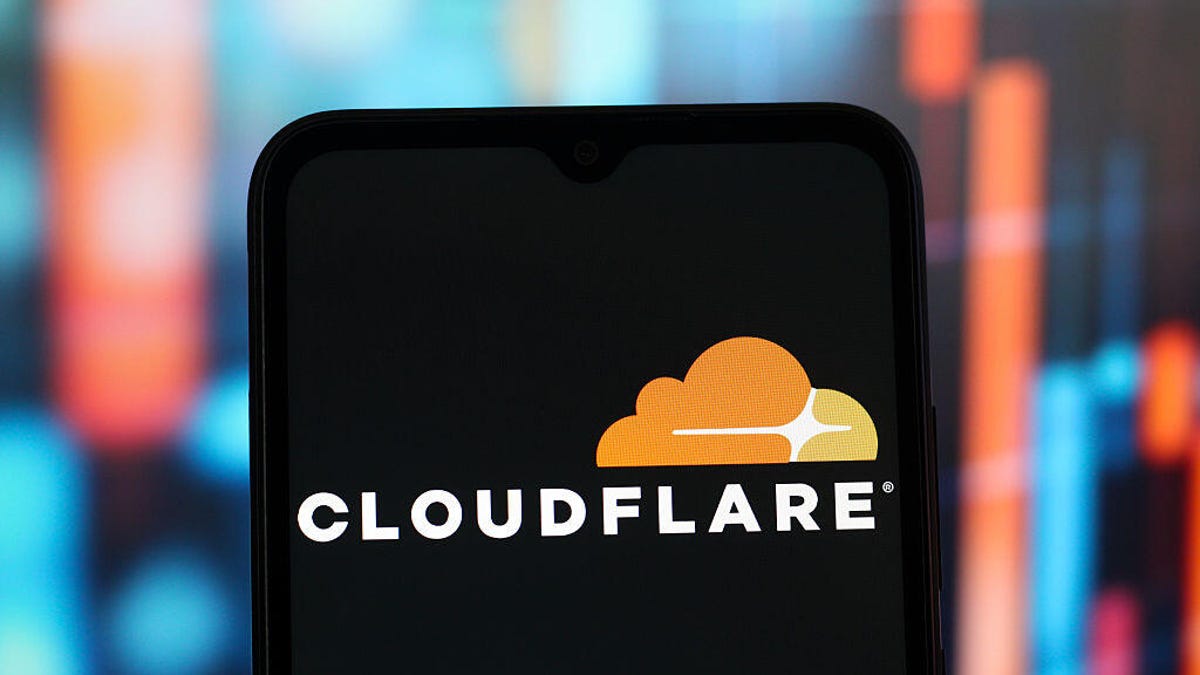Technologies
Got ‘Tricked’ Into an Amazon Prime Subscription? You Could Be Owed Part of $2.5 Billion
Learn who qualifies for the Amazon FTC settlement and how much money you might receive.

If you’ve ever clicked a button on Amazon and accidentally signed up for Prime, or felt like you needed a map to find the cancellation page, you aren’t crazy. You were being played. The Federal Trade Commission just validated your frustration by hitting Amazon with a historic $2.5 billion settlement over its deceptive subscription tactics.
This isn’t just a slap on the wrist; it’s a massive payout. A whopping $1.5 billion is earmarked to refund eligible subscribers, with the rest serving as a civil penalty. Amazon is now legally required to stop the games, meaning they have to give you a clear, obvious option to decline Prime and make leaving the service as easy as joining.
Of course, Amazon isn’t admitting to any shady behavior. «Amazon and our executives have always followed the law, and this settlement allows us to move forward and focus on innovating for customers,» Mark Blafkin, Amazon senior manager, said in a statement. «We work incredibly hard to make it clear and simple for customers to both sign up or cancel their Prime membership, and to offer substantial value for our many millions of loyal Prime members around the world.»
Don’t miss any of our unbiased tech content and lab-based reviews. Add CNET as a preferred Google source.
Why did the FTC file a lawsuit against Amazon?
The FTC filed suit against Amazon accused the company of using «dark patterns» to nudge people into Prime subscriptions and then making it too hard to cancel. The FTC maintained Amazon was in violation of Section 5 of the FTC Act and the Restore Online Shoppers’ Confidence Act.
«Specifically, Amazon used manipulative, coercive or deceptive user-interface designs known as ‘dark patterns’ to trick consumers into enrolling in automatically renewing Prime subscriptions,» the FTC complaint states.
Who’s eligible for Amazon’s payout?
Amazon’s legal settlement is limited to customers who enrolled in Amazon Prime between June 23, 2019, and June 23, 2025. It’s also restricted to customers who subscribed to Prime using a «challenged enrollment flow» or who enrolled in Prime through any method but were unsuccessful in canceling their memberships.
The FTC called out specific enrollment pages, including Prime Video enrollment, the Universal Prime Decision page, the Shipping Option Select page and the Single Page Checkout. To qualify for a payout, claimants must also not have used more than 10 Amazon Prime benefits in any 12-month period.
Customers who signed up via those challenged processes and did not use more than three Prime benefits within one year will be paid automatically by Amazon within 90 days. Other eligible Amazon customers will need to file a claim, and Amazon is required to send notices to those people within 30 days of making its automatic payments.
Customers who did not use a challenged sign-up process but instead were unable to cancel their memberships will also need to file claims for payment.
How big will the Amazon payments be?
Payouts to eligible Amazon claimants will be limited to a maximum of $51. That amount could be reduced depending on the number of Amazon Prime benefits you used while subscribed to the service. Those benefits include free two-day shipping, watching shows or movies on Prime Video or Whole Foods grocery discounts.
Customers who qualify for the payments should receive them by Dec. 24.Customers outside the US aren’t eligible for the payout.
Technologies
Score the Apple Watch Series 10 for a Whopping Half Off This Black Friday
Walmart is selling the 42mm GPS and cellular configuration for just $250, perfect for the gift-giving season.

We’re almost in the throes of Black Friday, and plenty of early deals are available now, including at Walmart. The retailer is lowering prices on coveted Apple gear and we’ve spotted the 42mm Apple Watch Series 10 cellular model at a massive 50% off.
This brings the Apple Watch Series 10 down to just $249, which is both cheaper than its original price and the newer Apple Watch Series 11. Considering this major discount, we don’t expect this deal to last for long.
Walmart currently has the 42mm Apple Watch Series 10 GPS and cellular configurations for this price with a jet black aluminum case and black sport band or a silver aluminum case and denim sport band.
The Apple Watch Series 10 is a great fit for fitness enthusiasts who want to keep better track of their metrics. Some of the health and wellness measures you can monitor include oxygen, heart rate, sleep patters, menstrual cycle patterns and physical activity.
Along with this, you can sync this smartwatch to your phone and receive calls or texts. With a battery life of up to 18 hours with a single charge, you won’t have to worry about looking for an outlet through the day. Apple designed the Apple Watch Series 10 to be IPX6 certified, which means you won’t have to stress over rain, splashes or light swimming up to 50 meters deep.
Looking for a new smartwatch but not sure if this deal is for you? Check out our list of the best smartwatches so you can look through more options.
SMARTWATCH DEALS OF THE WEEK
-
$359 (save $70)
-
$330 (save $20)
-
$140 (save $60)
-
$202 (save $49)
Why this deal matters
Now that the Series 11 is widely available, savvy shoppers can save $250 on the slightly older Apple Watch Series 10 (42mm) at Walmart. This discount can score you the Apple Watch Series 10 for a massive 50% off. Though colors and sizes are limited, now is an excellent to stock up on this smartwatch.
Join Our Daily Deals Text Group!
Get hand-picked deals from CNET shopping experts straight to your phone.
By signing up, you confirm you are 16+ and agree to receive recurring marketing messages at the phone number provided. Consent is not a condition of purchase. Reply STOP to unsubscribe. Msg & data rates may apply. View our Privacy Policy and Terms of Use.
Technologies
The Porsche Cayenne Finally Goes Electric, and It’s the Most Powerful Porsche Ever
Porsche has been gradually electrifying its lineup, and the fan-favorite Cayenne is the latest to go green.
Technologies
Cloudflare CEO Apologizes for ‘Unacceptable’ Outage and Explains What Went Wrong
For several hours Tuesday, a significant portion of the internet was unavailable in Cloudflare’s worst outage since 2019.

The Cloudflare outage on Tuesday that disrupted access to many websites and services — including OpenAI, Spotify, X, Grindr, Letterboxd and Canva — was the company’s worst outage since 2019, CEO Matthew Prince says.
Other disruptions have centered on specific network features, Prince wrote in a blog post. «But in the last 6+ years we’ve not had another outage that has caused the majority of core traffic to stop flowing through our network.»
Cloudflare is a cloud services and cybersecurity company based in San Francisco that is used by approximately 20% of all websites, according to W3Techs. It’s one of a handful of services, along with Amazon Web Services, CrowdStrike and Fastly (all of which have experienced major outages in the past few years) that you might never have heard of, but that provide essential internet infrastructure.
The bulk of sites and services impacted by Tuesday’s outage, which began around 3:30 a.m. PT, seemed to recover within just over three hours. By the end of the day, everything had returned to normal, and Cloudflare set about explaining what went wrong. Here’s what you need to know.
Don’t miss any of our unbiased tech content and lab-based reviews. Add CNET as a preferred Google source.
What caused the Cloudflare outage?
Cloudflare was keen to emphasize that the outage was not caused either directly or indirectly by a cyberattack. At first the company did suspect it might have originated from a «hyper-scale DDoS attack,» Prince said in his blog post. But it turned out that the outage resulted from an internal software failure.
A change in one of Cloudflare’s databases generated a larger-than-expected feature file, which was too big for the company’s software to run, said Prince. This caused the software to fail.
Once Cloudflare identified the problem, it was able to replace the problematic file with an earlier version and get most traffic flowing normally again by 6:30 a.m. PT.
«We are sorry for the impact to our customers and to the Internet in general,» said Prince. «Given Cloudflare’s importance in the Internet ecosystem any outage of any of our systems is unacceptable. That there was a period of time where our network was not able to route traffic is deeply painful to every member of our team. We know we let you down today.»
Which sites and services were impacted?
Cloudflare has a massive range of clients across the internet, ranging from websites that are household names to smaller services you might not have heard of. Due to its size, when it went down, it took many of those sites and services with it.
Among those affected by the outage was Downdetector, which is where most people go to report problems when services are offline. (Downdetector is owned by the same parent company as CNET, Ziff Davis.)
Once it got back up and running, Downdetector said that it received over 2.1 million reports during the outage period. Over 435,000 of these came from the US, with the UK, Japan and Germany appearing to be the countries that were next most affected.
Most of the reports pertained to Cloudflare, but other affected companies also received a significant number of reports. They include X (320,549 reports), League of Legends (130,260 reports), OpenAI (81,077 reports), Spotify (93,377 reports) and Grindr (25,031 reports).
How did the outage unfold?
Cloudflare first acknowledged the outage at 3:48 a.m. PT. The company issued a statement on its system status page saying that it was aware of the problem.
«Cloudflare is aware of, and investigating an issue which impacts multiple customers: Widespread 500 errors, Cloudflare Dashboard and API also failing,» it said. «We are working to understand the full impact and mitigate this problem. More updates to follow shortly.»
At 5:09 a.m. PT, the company said the issue had been identified and a fix was being implemented. In the subsequent hours, errors began to drop and services gradually came back online.
Cloudflare added at 9:14 a.m. PT that most services had returned to normal. «A full post-incident investigation and details about the incident will be made available asap,» it said.
Is the internet stable and reliable?
The Cloudflare outage comes just one month after Amazon Web Services went down, causing havoc across the internet. The AWS outage affected sites including Reddit, Snapchat, Roblox and Fortnite, sparking many to ask whether having such huge swaths of the internet reliant on a few centralized services is sensible or safe.
«The Cloudflare outage is not explicitly caused or linked to the AWS or Azure outages last month, but like those failures, it shows the impact of concentration risk,» said Brent Ellis, principal analyst at Forrester Research. «In this case, the 3 hour 20 minute outage could have direct and indirect losses of around $250 million to $300 million when you consider the cost of down-time and the downstream effects of services like Shopify or Etsy that host the stores for tens to hundreds of thousands of businesses.»
The disruption to services from ChatGPT maker OpenAI in particular highlighted concerns about the growing investment in artificial intelligence and the fragility of the cloud infrastructure that AI relies upon to function every day.
«The most dominant platform did not buckle because of simultaneous queries or the release of a new competitive model, but because of a problem with Cloudflare, a web security and performance provider,» said Sarah Kreps, director of the Tech Policy Institute at Cornell University. «The issue exposes the reality that this multibillion, even trillion-dollar investment in AI is only as reliable as its least scrutinized third-party infrastructure.»
-

 Technologies3 года ago
Technologies3 года agoTech Companies Need to Be Held Accountable for Security, Experts Say
-

 Technologies3 года ago
Technologies3 года agoBest Handheld Game Console in 2023
-

 Technologies3 года ago
Technologies3 года agoTighten Up Your VR Game With the Best Head Straps for Quest 2
-

 Technologies4 года ago
Technologies4 года agoBlack Friday 2021: The best deals on TVs, headphones, kitchenware, and more
-

 Technologies4 года ago
Technologies4 года agoVerum, Wickr and Threema: next generation secured messengers
-

 Technologies4 года ago
Technologies4 года agoGoogle to require vaccinations as Silicon Valley rethinks return-to-office policies
-

 Technologies4 года ago
Technologies4 года agoOlivia Harlan Dekker for Verum Messenger
-

 Technologies4 года ago
Technologies4 года agoiPhone 13 event: How to watch Apple’s big announcement tomorrow

